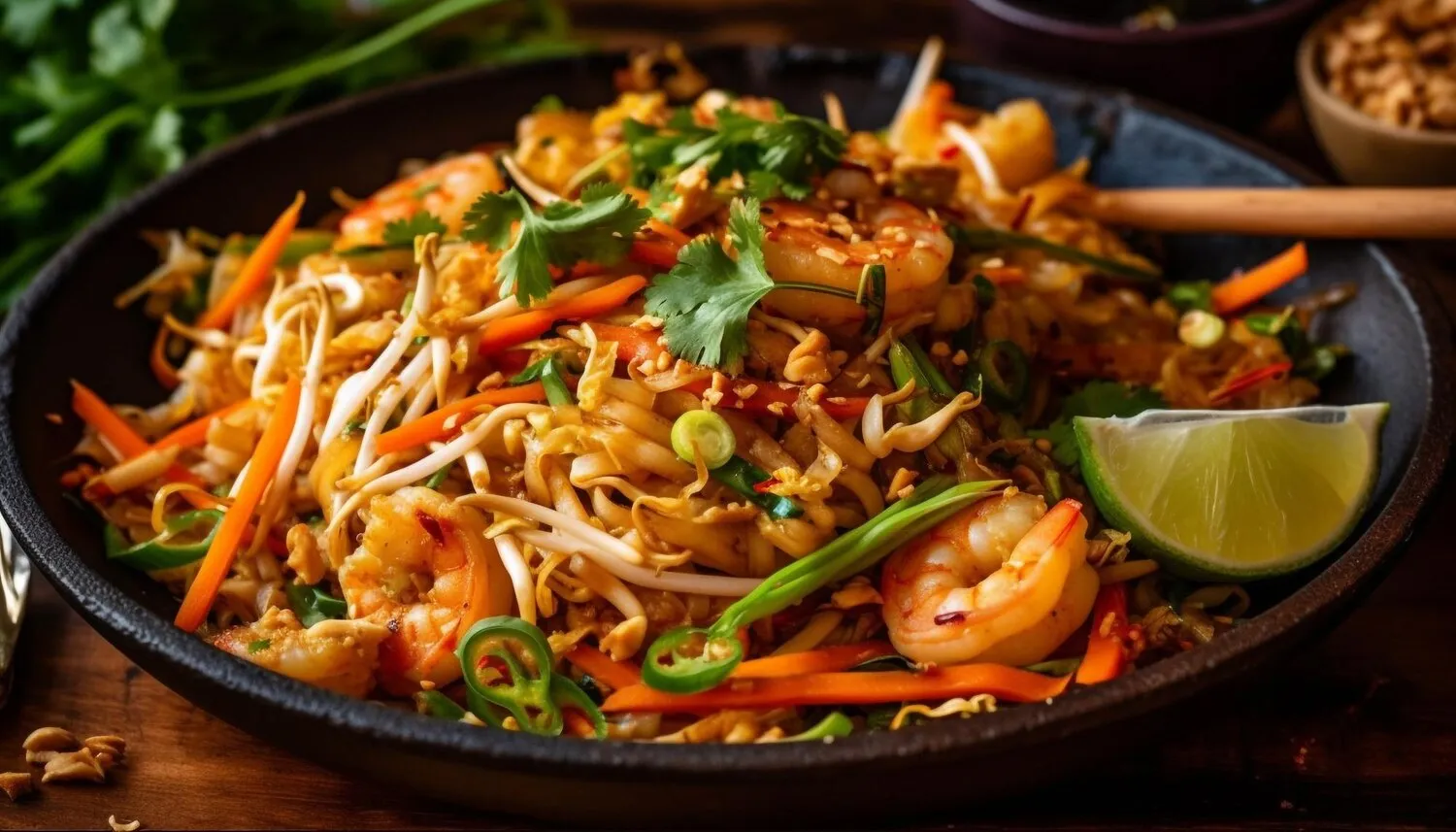
Yakisoba Misto
Stir-fried noodles with beef, chicken, and vegetables.
Nutrition Facts
* The % Daily Value (DV) tells you how much a nutrient in a serving of food contributes to a daily diet. 2,000 calories a day is used for general nutrition advice.
yakisushi
Yakisoba evolved in Japan after World War II, influenced by Chinese noodle dishes and the availability of wheat flour. The 'misto' variation, incorporating both beef and chicken, likely reflects a desire for a more substantial and flavorful meal, potentially inspired by Western culinary trends or the growing availability of diverse ingredients in post-war Japan.
Yakisoba is a popular and accessible dish in Japan, often enjoyed at festivals, street food stalls, and as a quick and easy meal at home. It represents a blend of culinary influences and a reflection of Japan's adaptability and appreciation for delicious, convenient food.
Street Food Staple
Yakisoba is commonly found at Japanese festivals (matsuri) and street food events, where it's cooked on large griddles and served in paper containers.
Home Cooking Favorite
It's a quick and easy meal that's often prepared at home, allowing for variations in ingredients based on personal preference and availability.
Teppanyaki Restaurants
Yakisoba is frequently featured on the menu of teppanyaki restaurants, where it's cooked on a large iron griddle in front of the customers.
Yakisoba Misto offers a savory, umami-rich flavor profile, balanced by the sweetness of the yakisoba sauce and the distinct textures of beef, chicken, vegetables, and noodles.
The savory flavor comes from the yakisoba sauce, typically a combination of soy sauce, Worcestershire sauce, oyster sauce (optional), ketchup, and sometimes sugar and spices. The beef contributes a rich, meaty depth, while the chicken provides a leaner protein element. The vegetables, often including cabbage, carrots, onions, and bean sprouts, add freshness and a slightly sweet counterpoint. The noodles themselves absorb the sauce, creating a cohesive and flavorful dish.
Noodle Preparation
Loosen the yakisoba noodles before stir-frying to prevent clumping. You can do this by microwaving them briefly with a little water or by rinsing them under warm water and draining well.
Meat Preparation
Slice the beef and chicken thinly and marinate them briefly in soy sauce, sake, and ginger to enhance their flavor and tenderness. Ensure the beef and chicken are cooked fully, but not overcooked and dried out.
Sauce Adjustment
Taste the yakisoba sauce before adding it to the noodles and adjust the sweetness, saltiness, or umami to your liking. A touch of brown sugar or honey can enhance the sweetness, while a dash of soy sauce adds more saltiness. Oyster sauce can increase the savory umami depth.
Wok Hei (if possible)
If using a wok, preheat it to very high heat until it just starts to smoke. Cooking quickly on high heat gives the dish wok hei (breath of the wok), a desirable slightly charred flavor.
Explore additional Noodles dishes and restaurants
Explore NoodlesDiscover top dining spots and culinary experiences in Aracaju.
Explore AracajuLearn more about the food culture, restaurant scene, and culinary heritage of Brazil.
Explore Brazil